Вы здесь
Dakhma Chilpyk.
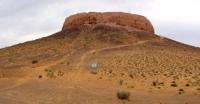
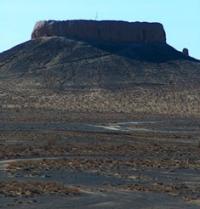
Tours to Chilpyk tower.
"Marakanda is the second of the best places and countries".. "The first is Khorezm (not within modern borders, but in the bosom of Tejen and Murghab.)". Anahita (in local - Nana) - Mother - Earth - the goddess of the settled. Mithra - Swift-footed Sun - God of nomadic tribes.
The main hypostasis of Mithra is Truth, because without truth, without comradeship, you cannot win in battle. "He who lied to Mithra on horseback will not ride away..."Worshiping the Truth, reaching the point of religiosity, worshiping Friendship is the eternal law of the nomads".
Avesta.
Excursion to Chilpyk tower.
The Chilpyk ring-shaped structure is located on the natural Chelpyk hill 148.1 meters above sea level, 641 meters from the right (eastern) bank of the Amu Darya River, 2.4 kilometers northwest of the Nukus-Urgench highway, at 43, 8 kilometers southeast of the city, 5.3 kilometers north and slightly west of the village of Kipchak in the Amu Darya region of the Republic of Karakalpakstan.
Dakhma Chilpyk (in different sources - Chilpyk, Shylpyk, Chilpyk-kala (Uzbek Chilpik; Karakalp. Shilpik; English Chilpyk) - a burial tower (“tower of silence”) refers to the Zoroastrian culture. The monument of the ancient Khorezm era, erected at the end of the Ist century BC - early Ist century AD Dakhma Chilpyk is a typical structure for the specific Zoroastrian practice of burying the dead, but it strikes with its monumental size and belongs to the heyday of the Zoroastrian culture in Ancient Khorezm at the crossroads of historical eras.
The approximate date of construction is the end of the Ist century BC. - the beginning of the Ist century A.D. According to the Zoroastrians, the human corpse was a physical and spiritual matter that defiled the pure elements of fire, water and earth.
Therefore, the body of the deceased was placed in an elevated place - a dakhma, a round tower without a roof. Here, the body of the deceased was left to scavengers and the rays of the sun until the bones were completely cleared of soft tissue.
This practice of burial was briefly mentioned by Herodotus in the Vth century BC. The absence of towers and loopholes, residential and storage facilities, water sources indicates that throughout its history, the "tower of silence" has never been used as a fortress or fortified outpost, but only for burials.
Despite the formidable appearance and the name "Chilpyk-kala" ("Chilpyk fortress") found in the sources, long excavations could not find traces of a long-term human stay here - only fragments of ossuaries. Analysis of various parts of the structure shows that Chilpyk was used as a dakhma even after the invasion of Arab troops at the beginning of the VIIIth century and the establishment of Islam in the lands of Khorezm.
There are traces of two reconstructions in the inner part of the dakhma: the first was carried out in the 7th-8th centuries, the second at a later time - in the IXth - Xth centuries. In the future, the tower periodically served as an observation and signal tower, dominating the area, with a shift watch until the Mongol invasion at the beginning of the XIIth century.
Back in the 19th century (1873), the famous Russian battle painter N.N. Karazin captured in his sketches Chilpyk, which was not yet known in historical circles at that time. Scientifically, Dakhma Chilpyk was first investigated in 1940 by the Khorezm archaeological expedition led by S.P. Tolstov.
Dakhma Chilpyk is a ring-shaped structure 15 meters high and 65 meters in diameter, crowning a natural conical hill 35 meters high. It has the shape of an open, slightly flattened circle in diameter, from north to south 62 meters, from west to east 67 meters.
The walls were built of pakhsa bricks, typical of the antique period; their thickness varies from 5 meters at the base to 2-3 meters at the top. A sufa was located along the perimeter of the wall - a place where the dead were laid for cleansing. In order not to defile the water and the earth with decay, the bodies were left to be devoured by scavengers and the rays of the sun.
After being freed from the soft covers, the bones were folded into ossuaries, special containers for the remains, and buried in the ground on the slopes of the hill or in special crypts - naus, branching from the inner center of the dakhma, like rays from the sun.
The entrance to the tower was located on the northwest side. Here traces of gates and clay steps (about 20 meters) have been preserved, which descended towards the Amu Darya, and further in the form the ramp connected the structure to the river bank.
Zoroastrian cosmology associated the western direction as the direction of the setting sun with death, and, perhaps, therefore, the staircase and the associated pylon were built on the western side of the hill. The peculiarity of Chilpyk is the relatively small number of discovered ossuaries.
This allowed its first researchers (SP Tolstov, Yu. P. Manilov) to suggest that this structure was a “royal dakhma”, where the priests laid out the bodies of the deceased representatives of the ruling dynasty of Ancient Khorezm to be eaten by griffins.
In addition, during the excavations, scientists managed to find inscriptions that date back to different centuries. The inscriptions are incised in the form of complex geometric shapes located at an oblique angle. Traditionally, the remains of the deceased (skeletons) after cleansing were placed in ceramic or stone sarcophagi - ossuaries, thus the bodies of the deceased did not come into contact with the sacred ground.
Thus, the slopes of the hill on which Chilpyk is located were filled with burials.
A large number of similar sarcophagi were found in the burials of the foothill ridges and spurs of Sultanuizdag. However, relatively few ossuaries have been found in the interior of Chilpyk. SP Tolstov believed that Chilpyk in terms of its dating and architectural significance is comparable to the capital Toprak-Kala and could serve only a privileged stratum of the ruling dynasty.
From Toprak-kala to Chilpyk, they could sail on small ships and boats along the lower reaches of the Amu Darya (distance 72.6 kilometers). Ossuar burial was a special feature of Khorezm Zoroastrianism, which distinguished it from the Iranian Zoroastrian cults (Parthian and New Persian periods).
Ossuary burials are also typical for other parts of Central Asia - Sogdiana and Semirechye, but it is surprising that the area of their distribution never reached the borders of neighboring Iran. "Chilpyk" in the Karakalpak language is written and sounds like "Shylpyk", which means "clay" in translation. In some sources, one can also notice the name "Chilpyk-kala", which means by this name the attributes of a fortress, which does not correspond to the purpose of the dakhma or the history of Chilpyk.
Upon gaining independence by the Republic of Uzbekistan and the Republic of Karakalpakstan as part of Uzbekistan, Chilpyk and the Amu Darya River were included as national symbols in the coat of arms of the Republic of Karakalpakstan.
According to local legends collected by the ethnographer G.P. Snesarev, Chilpyk was once a fortified castle. There lived a princess who fell in love with a slave and fled to Chilpyk from the wrath of her father. Another legend says that this fortress was built by a hero named Chilpyk.
When building the castle, he dropped clumps of clay on the ground, from which a large hill was formed, on which a dakhma was erected. According to the third story of local residents, dakhma is the work of the deva Hadji Mulyuk, who leads an eternal struggle with the forces of light led by Ahuramazda.
Geographic coordinates of Dakhma Chilpyk: N42 ° 15'51.03 "E60 ° 04'11.77"
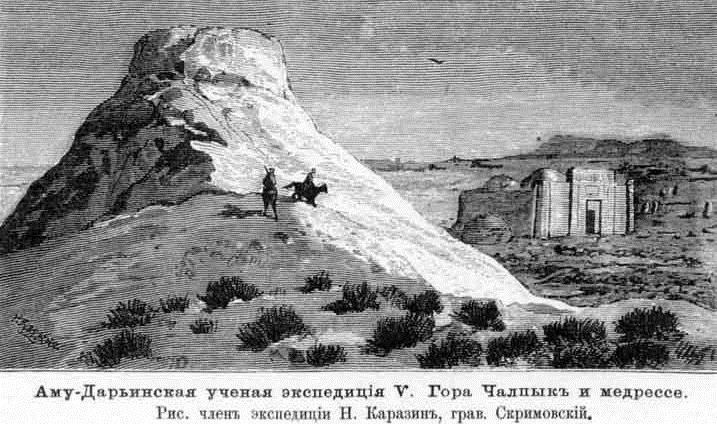
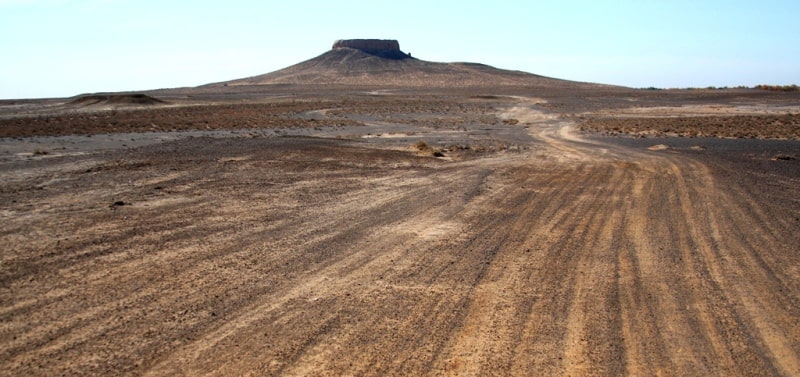
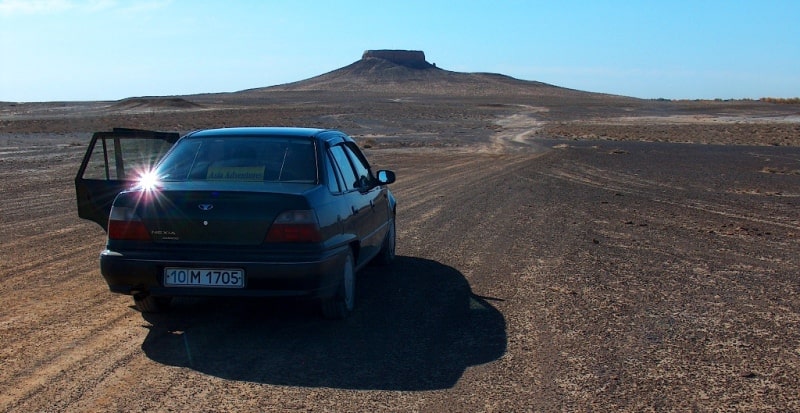

Literature:
1. "Herodotus on the Persians and their customs in his work." History ". https://vk.com/wall-114272403_197485
2. Tolstov S. P. "In the footsteps of the ancient Khorezm civilization". Part 1. Moscow - Leningrad: Publishing House of the Academy of Sciences of the USSR, 1948.
3. Boyce Mary. “Zoroastrians. Beliefs and customs ”. Translated from English and notes by IM Steblin-Kamensky. Institute of Oriental Studies. Moscow: Nauka, 1987.
4. Itina M. A. “For the 90th anniversary of SP Tolstov and the 60th anniversary of the Khorezm archaeological and ethnographic expedition”. Russian archeology. No. 4. Moscow, 1997.
5. Snesarev G. P. "The relics of pre-Muslim beliefs and rituals among the Uzbeks of Khorezm." USSR Academy of Sciences, Institute of Ethnography and Anthropology named after V.I. N.N. Miklouho-Maclay. Moscow: Science, 1969.
Authority:
https://ru.wikipedia.org/wiki/%D0%94%D0%B0%D1%85%D0%BC%D0%B0
Alexander Petrov.
Photos by:
Alexander Petrov.







